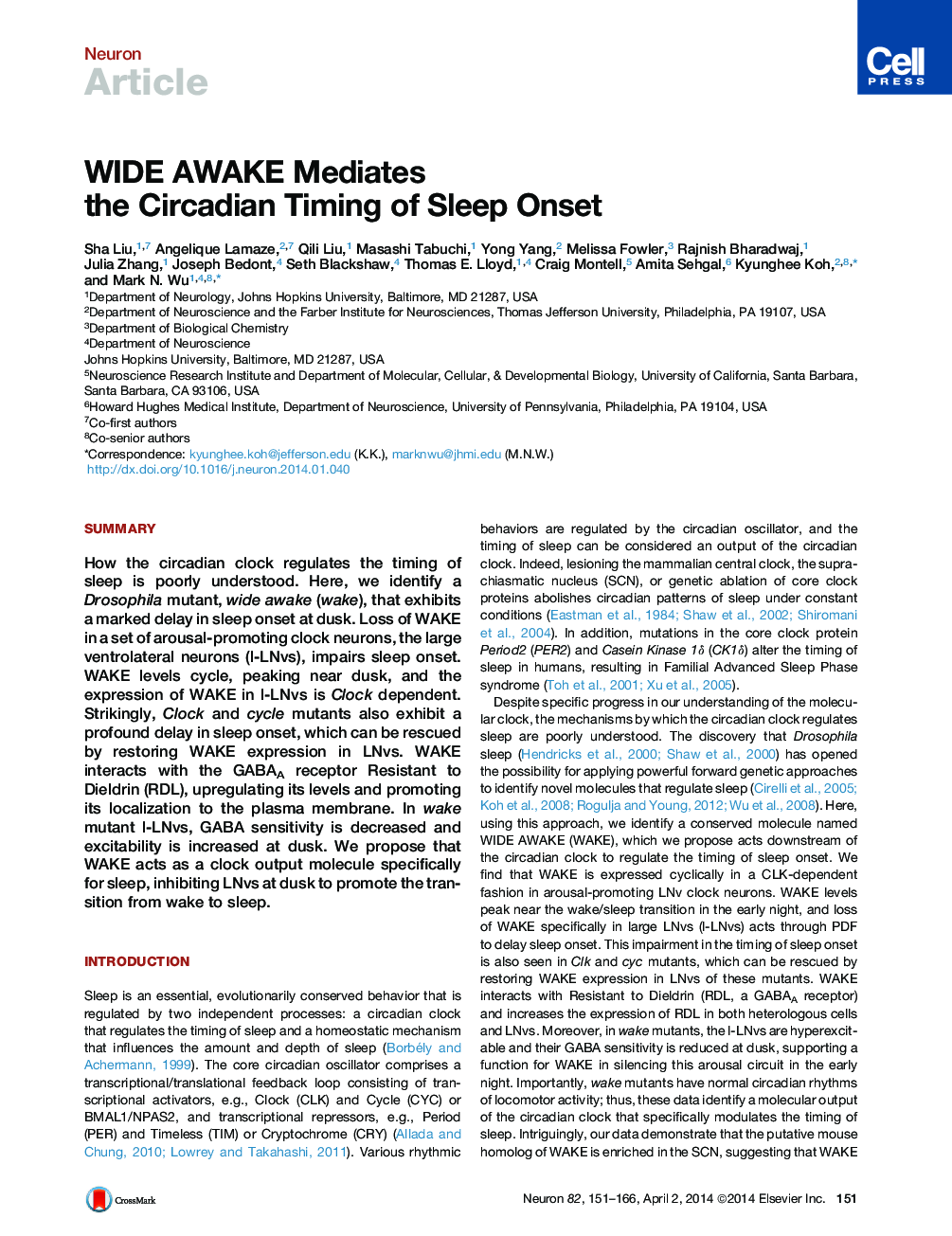| Article ID | Journal | Published Year | Pages | File Type |
|---|---|---|---|---|
| 4321088 | Neuron | 2014 | 16 Pages |
•WAKE acts in arousal-promoting clock cells (LNvs) to regulate timing of sleep onset•WAKE levels cycle in these LNv cells, and WAKE expression depends on CLOCK function•WAKE acts downstream of CLOCK to upregulate RDL, a GABAA receptor•WAKE reduces excitability of LNvs at dusk to promote the switch from wake to sleep
SummaryHow the circadian clock regulates the timing of sleep is poorly understood. Here, we identify a Drosophila mutant, wide awake (wake), that exhibits a marked delay in sleep onset at dusk. Loss of WAKE in a set of arousal-promoting clock neurons, the large ventrolateral neurons (l-LNvs), impairs sleep onset. WAKE levels cycle, peaking near dusk, and the expression of WAKE in l-LNvs is Clock dependent. Strikingly, Clock and cycle mutants also exhibit a profound delay in sleep onset, which can be rescued by restoring WAKE expression in LNvs. WAKE interacts with the GABAA receptor Resistant to Dieldrin (RDL), upregulating its levels and promoting its localization to the plasma membrane. In wake mutant l-LNvs, GABA sensitivity is decreased and excitability is increased at dusk. We propose that WAKE acts as a clock output molecule specifically for sleep, inhibiting LNvs at dusk to promote the transition from wake to sleep.
